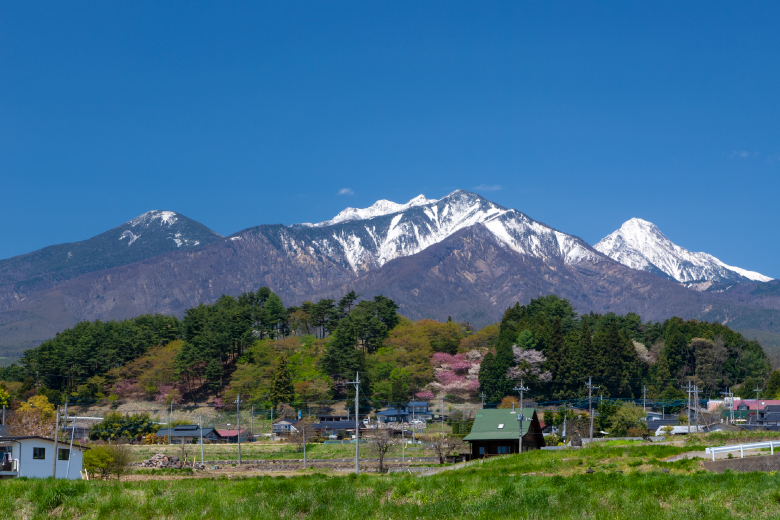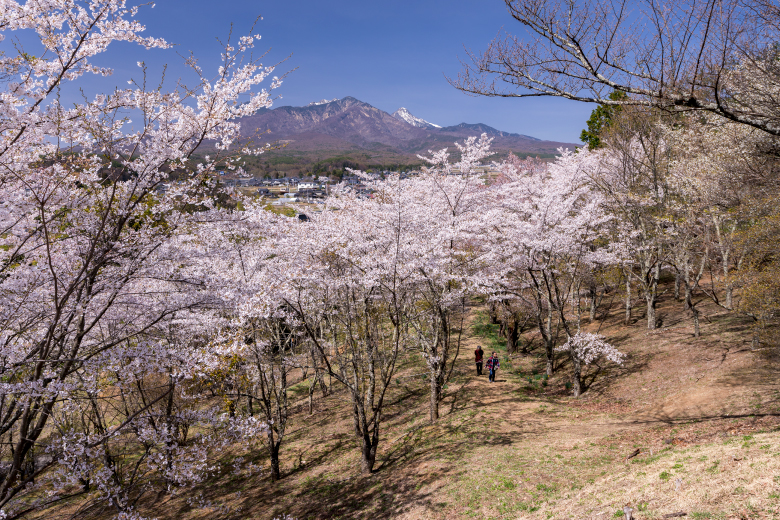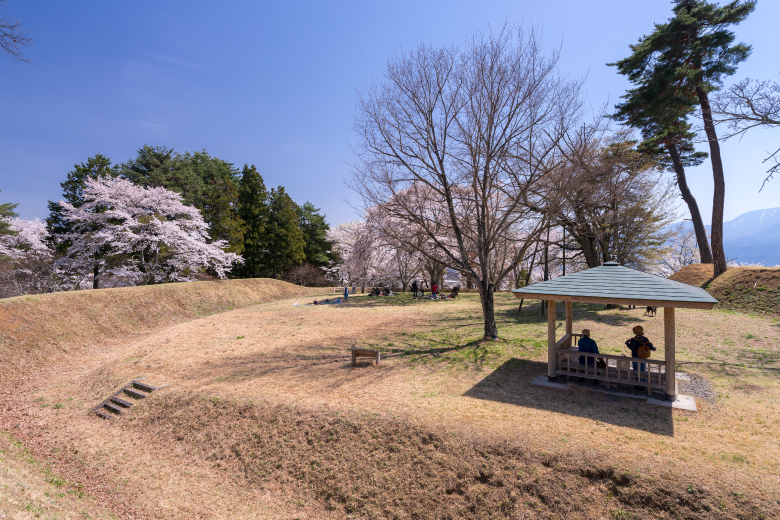Minamoto no Kiyomitsu is said to have built Yato-jo Castle after he and his father Minamoto no Yoshikiyo were exiled to Kai Province from Hitachi Province and arrived in Hemi. Kiyomitsu took on the Hemi surname and established the foundation of the Kai Genji Clan.
Whether “Mount Hemi” mentioned in the historical chronicle Azuma Kagami (Mirror of the East) refers to Yato-jo Castle or to Wakamiko-jo Castle in Sutama Town is not known at present, but it is certain that the Kai Genji Clan commenced full-scale pursuit of the Taira Clan from this land.
The ruins of the castle have been designated a national Historic Site for its significance in understanding the history of the Takeda Clan which has its roots in the Kai Genji Clan.
Yato-jo Castle was built on a mudflow hill that was formed when a sector collapse occurred in the Yatsugatake Mountains. An excavation survey yielded building remains and artifacts dating from the 14th to 15th centuries, including a large dry moat, earthen embankment, and enclosure. The unraveling of the history of the castle is awaited.
Whether “Mount Hemi” mentioned in the historical chronicle Azuma Kagami (Mirror of the East) refers to Yato-jo Castle or to Wakamiko-jo Castle in Sutama Town is not known at present, but it is certain that the Kai Genji Clan commenced full-scale pursuit of the Taira Clan from this land.
The ruins of the castle have been designated a national Historic Site for its significance in understanding the history of the Takeda Clan which has its roots in the Kai Genji Clan.
Yato-jo Castle was built on a mudflow hill that was formed when a sector collapse occurred in the Yatsugatake Mountains. An excavation survey yielded building remains and artifacts dating from the 14th to 15th centuries, including a large dry moat, earthen embankment, and enclosure. The unraveling of the history of the castle is awaited.
COURSE MAP
Let's go to the next spot!
- 1.8km / 54 on foot Minutes
- 06Fukakusa Castle Site


